TOKYO – Eri Takagi, a 30-year-old lady, was one of the thousands who packed the Ariake Gymnastics Stadium in Tokyo last Saturday for Mega Cosme Land 2025, a K-beauty festival that drew fans from across Japan.
“I took the Shinkansen from Nagoya. It took about an hour to get here,” said Takagi, with her hands full of pastel-colored shopping bags. “No one in my friend group uses Japanese cosmetics anymore. Once you try K-beauty, you can’t go back.”
What began as a niche fascination has turned into a mass-market phenomenon.
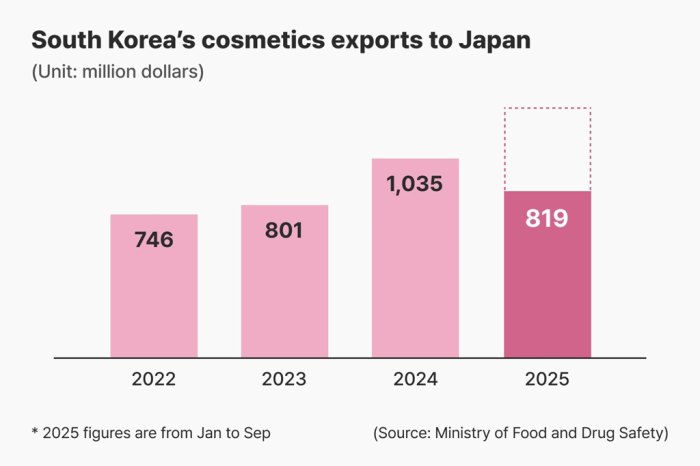
(Graphics by Daeun Lee)
From nationwide festivals to sleek standalone shops in some of Tokyo’s most expensive districts, South Korea’s cosmetics brands are taking over Japan’s beauty scene – and captivating a new generation of consumers.
FROM SUBCULTURE TO MAINSTREAM
According to Qoo10 Japan, the country’s leading beauty e-commerce platform and host of Mega Cosme Land, about 25,000 people visited the two-day event Oct. 4–5, while more than 200,000 signed up for advance tickets, so many that entry had to be determined by lottery.
The festival’s scale reflects K-beauty’s surge in popularity.
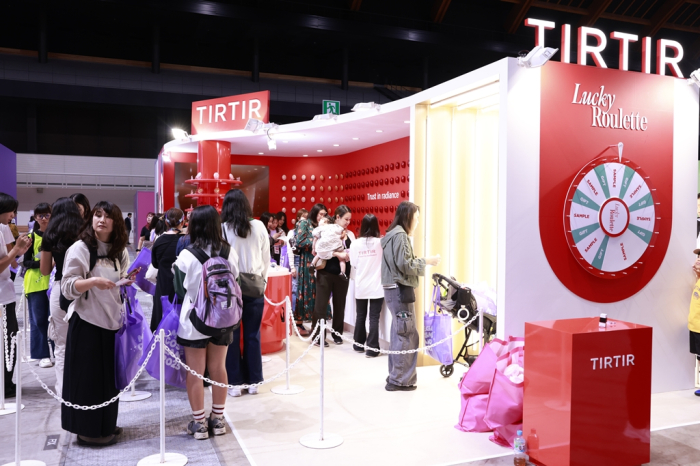
Tirtir’s booth at Mega Cosme Land 2025
This year’s venue was three times larger than in 2024, and the number of participating brands nearly doubled to 54, of which 51 were Korean.
Heavyweights such as Amorepacific Corp., the brands of which include Laneige, Innisfree and Etude, LG H&H Co., which owns the CNP and The Face Shop brands, Shinsegae International Co.’s Amuse, and fast-rising skincare brand Medicube joined indie labels such as d’Alba and VT Cosmetics to showcase the diversity of Korean innovation.
At the event, queues for product trials snaked across the venue.
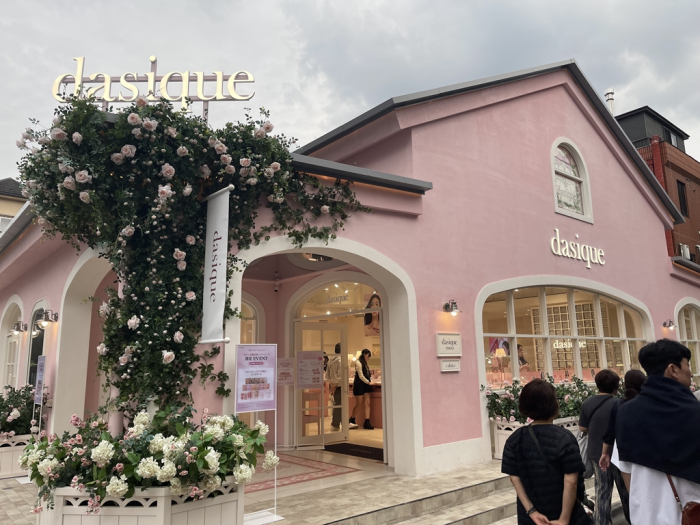
Dasique’s flagship outlet in Shin-Okubo, Tokyo
Some booths had waiting times of over an hour.
“Since the COVID-19 pandemic, K-beauty has become a mainstream part of Japanese daily life,” said an Amorepacific official. “Just as the LINE messenger app became essential after the 2011 earthquake, Korean beauty has become a national trend. Even in stores like Loft, Korean brands now occupy the front shelves ahead of Japanese ones.”
INDIE BRANDS MOVE INTO TOKYO’S PRICIEST STREETS
Beyond pop-up events, K-beauty’s success is visible on Tokyo’s streets.
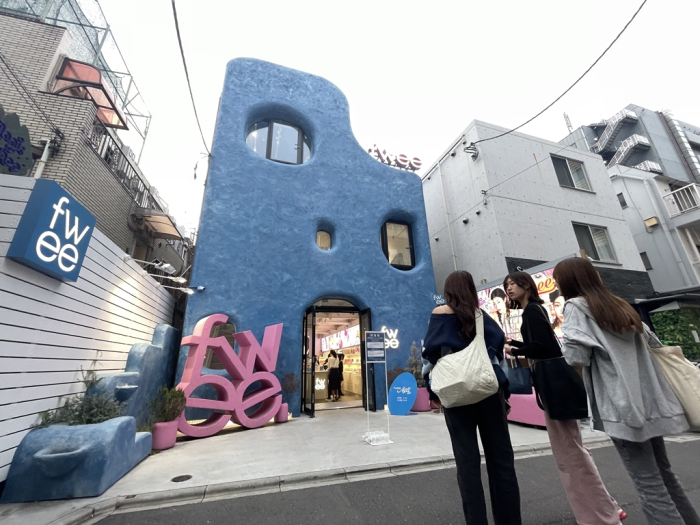
fwee’s flagship outlet in Shin-Okubo, Tokyo
Indie makeup label fwee opened a three-story flagship outlet in Shin-Okubo in September, drawing more than 500 visitors a day, 80% of them women in their teens and 20s.
The brand has since expanded to Osaka, Nagoya and Fukuoka.
Just a few blocks away, Dasique and Lilybyred launched their own boutiques in August and September, respectively, underscoring how Korean color brands have graduated from the back corners of drugstores to Japan’s premier shopping districts.
“Hallyu (the Korean wave) has fused into everyday culture for Japan’s MZ generation,” said a Qoo10 Japan official.
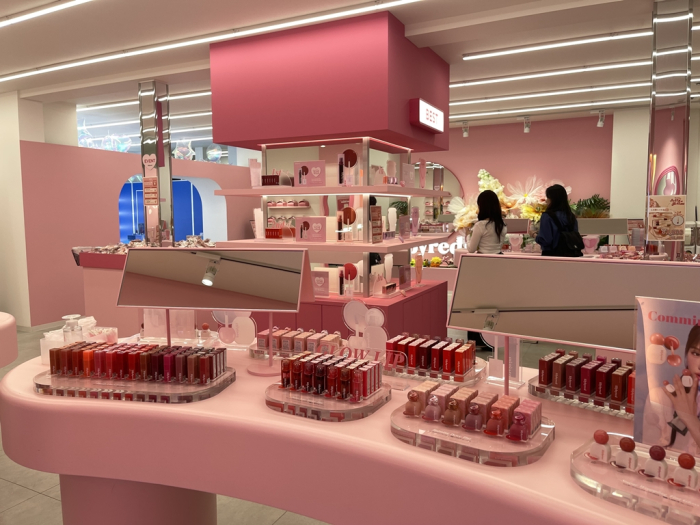
Lilybyred’s flagship outlet in Shin-Okubo, Tokyo
K-beauty brands are also localizing.
CNP has reformulated products to include ingredients preferred by Japanese consumers and incorporated popular character motifs into its packaging.
Amuse has released Japan-only shades and miniature packaging to match local tastes.
“Over half of our Japanese sales now come from limited-edition colors sold exclusively here,” said an Amuse official.
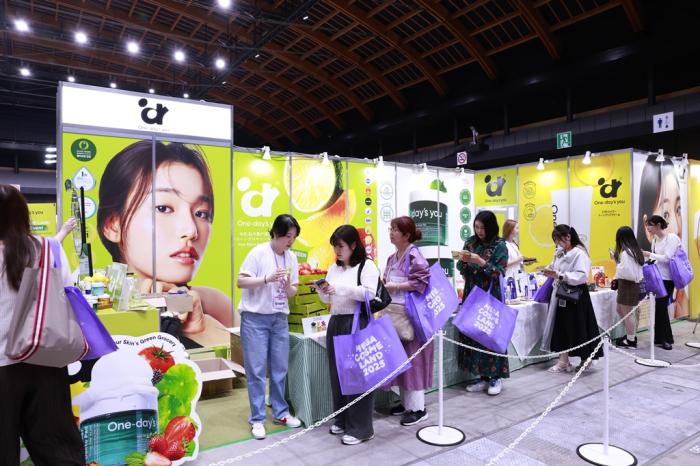
One-day’s you’s booth at Mega Cosme Land 2025
EXPORTS SURGE AS JAPAN BECOMES KEY GROWTH MARKET
The K-beauty boom is showing up in the numbers.
According to Korea’s Ministry of Food and Drug Safety, cosmetics exports to Japan reached $819 million in the first three quarters of 2025, up 10.4% from $742 million a year earlier.
Japan is now Korea’s third-largest cosmetics export market, after the US and China.
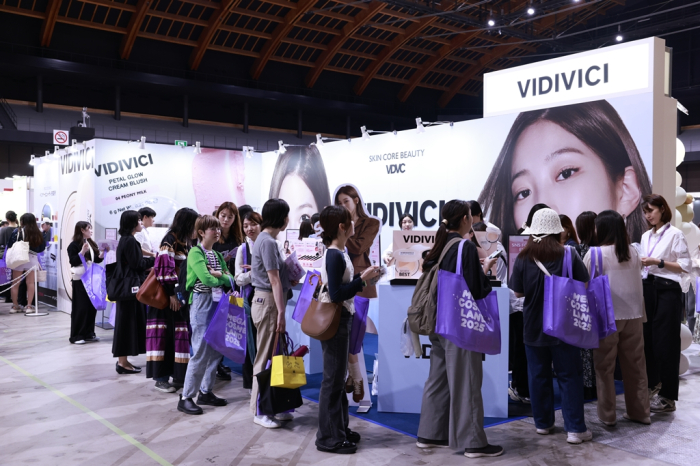
Vidvici’s booth at Mega Cosme Land 2025
Having surpassed $1 billion in exports for the first time last year, shipments to Japan are on track to hit a new record this year.
Behind the surge lies a deeper cultural shift: Japan’s MZ generation, raised on K-pop, K-drama and TikTok trends, sees Korean beauty not just as a product category but a lifestyle aesthetic – minimal, aspirational and social media–friendly.
As Takagi from Nagoya put it, echoing thousands of young fans in line at Ariake: “K-beauty just feels more current. It’s not about being flashy. It’s about being effortlessly perfect.”
Write to Hyun-jin Ra at raraland@hankyung.com
In-Soo Nam edited this article.

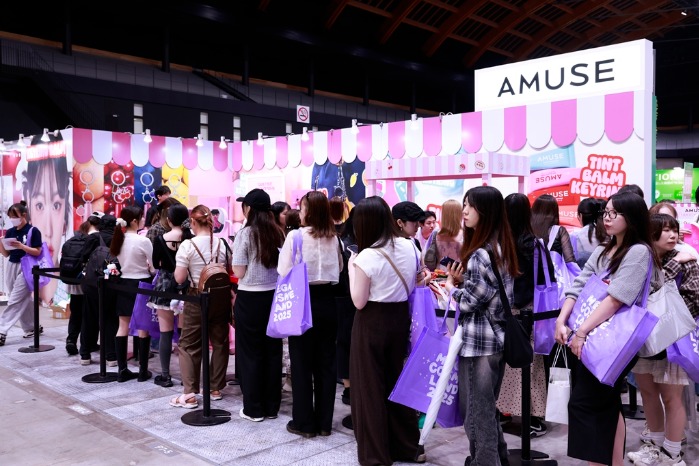
AloJapan.com